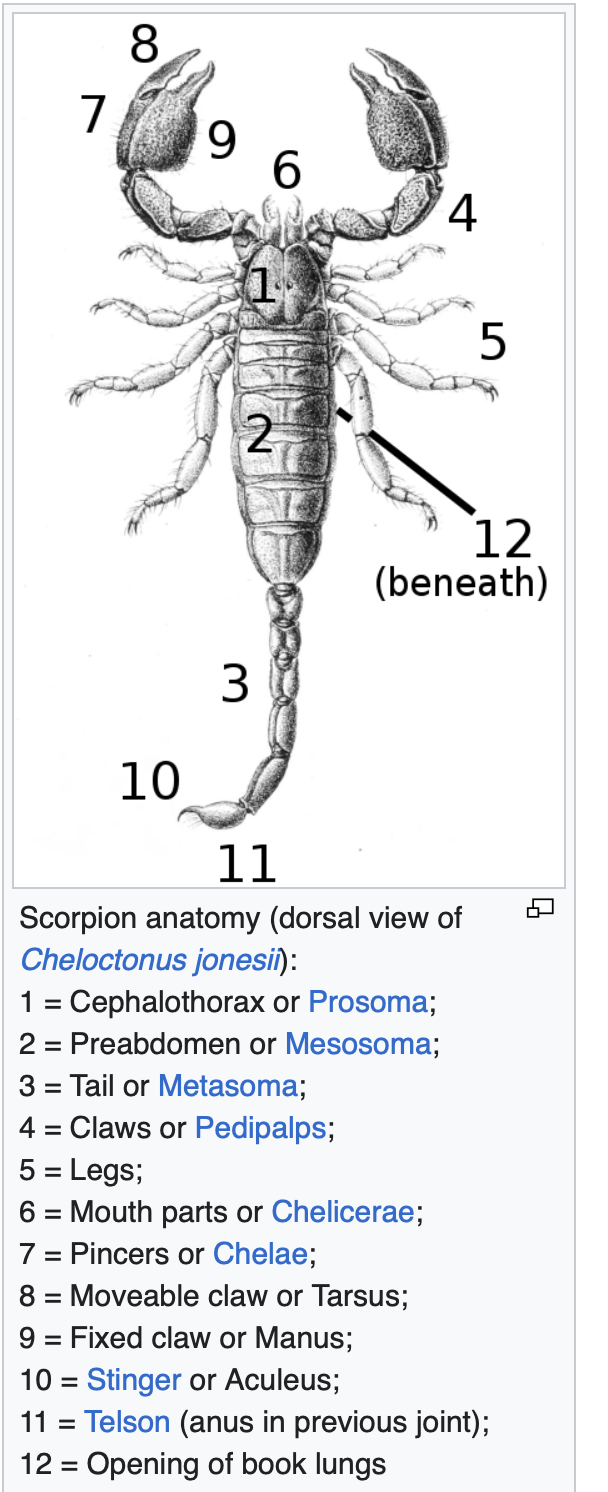
Access Wikipedia, and you'll learn they have eight legs, a pair of grasping pincers, and generally, a narrow, segemented tail that's curved over the back and ends with a stinger. They prey primarily on insects and other invertebrates. Their ancestors date back some 435 million years ago.
Scorpions now live on all continents except Antarctica. Scientists have described more than 2,500 described species in 22 families. The most venomous scorpion? That's considered to be "the deathstalker," Leiurus quinquestriatus, belonging to the Buthidae family.
What makes the deathstalker's venom so lethal is a potent cocktail of neurotoxins including chlorotoxin, agitoxin and scyllatoxin. While extremely dangerous, the unique chemical composition and scarcity of its venom also makes it the most valuable liquid (by volume) in the world with an estimated cost of $39 million per gallon. It is prized by the medical community because its properties have been found to be effective in the treatment of cancer, malaria and against bacteria such as tuberculosis.--Guinness Book of World Records.
Most people have never seen a scorpion up close, but visitors did at the Bohart Museum of Entomology display in the Academic Surge Building, 455 Crocker Lane, during the 12th annual UC Davis Biodiversity Museum Day.
Live scorpions, as well as specimens, drew curious looks and scores of questions.
Kat Taylor, a UC Davis freshman majoring in entomology, helped with a display coordinated by the Jason Bond arachnology lab. Bond, an authority on spiders, tarantulas and scorpions (among other arachnids) serves as the Evert and Marion Schlinger Endowed Chair in Insect Systematics, UC Davis Department of Entomology and Nematology, and the associate dean, College of Agricultural and Environmental Sciences.
The Bond lab display included sun scorpions, also known as wind scorpions, order Solifugae; and whip spiders or tailless whip scorpions, order Amblypygi.
Senior insect biosystematist Martin Hauser of the Plant Pest Diagnostics Branch, California Department of Food and Agriculture, and a traditional part of Biodiversity Museum Day, displayed Asian forest scorpions (genus Heterometrus) and two walking sticks (order Phasmida): Extatosoma tiaratum, the Australian spiny walking stick, and Ramulus artemis, a giant Vietnamese stick insect known as "a great thin walking stick."
Visitors marveled when Martin fluoresced a scorpion under ultraviolet light, turning it from an obscure brown to a glowing blue-green.
Scientists have known for more than 60 years that fluorescent compounds in the exoskeletons glow when exposed to UV light.
The 12th annual Biodiversity Museum Day showcased 11 museums and collections: the Anthropology Museum, Arboretum and Public Garden, Bohart Museum of Entomology, Botanical Conservatory, California Raptor Center, Center for Plant Diversity, Nematode Collection, Marine Invertebrate Collection, Museum of Wildlife and Fish Biology, Paleontology Collection and the Phaff Yeast Culture Collection.
BioDiv Day, founded by the Bohart Museum, is traditionally held on Presidents' Day weekend. This year's event, held Feb. 18, drew an estimated 3000, according to chair Tabatha Yang, education and outreach coordinator of the Bohart Museum. The "Super Science Day" is free and family friendly.
The Bohart Museum and the Jason Bond lab are both located in the Academic Surge Building. The Bohart Museum, located in Room 1124 and directed by UC Davis distinguished professor Lynn Kimsey, houses a worldwide collection of eight million insect specimens, plus a live "petting zoo" and a gift shop. The Bohart Museum is open to the public Monday through Thursday, from 8 a.m. to noon and from 1 to 5 p.m.
The next event to see insects and arachnids in the Academic Surge Building? That would Saturday, April 15 during the 109th annual UC Davis Picnic Day. It is free and open to the public.
Attached Images:
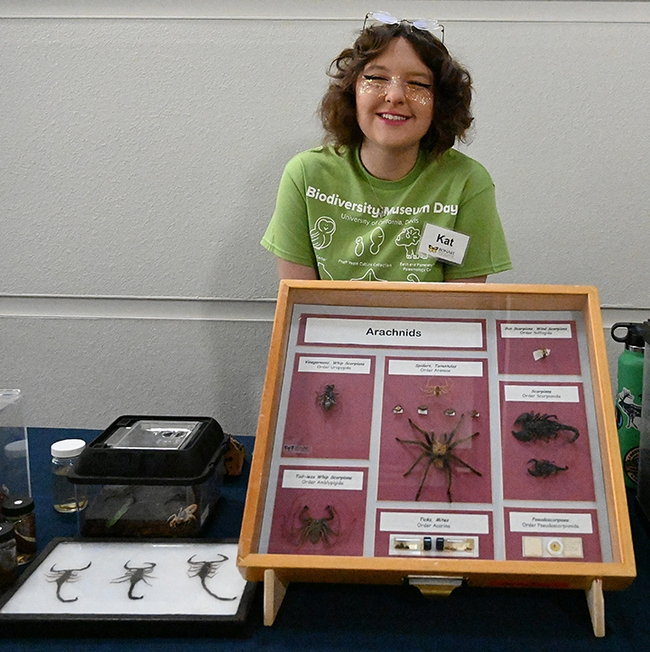
UC Davis entomology freshman student Kat Taylor answers questions at the Jason Bond lab display table. (Photo by Kathy Keatley Garvey)
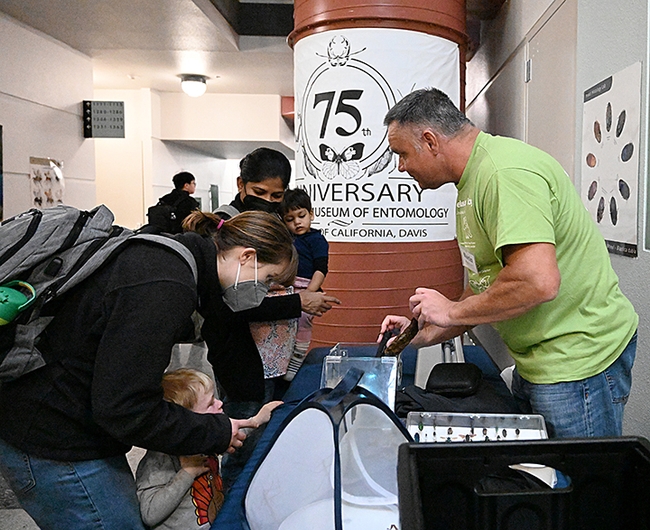
Martin Hauser, senior insect biosystematist in the Plant Pest Diagnostics Branch, California Department of Food and Agriculture, fluoresces an Asian forest scorption. (Photo by Kathy Keatley Garvey)
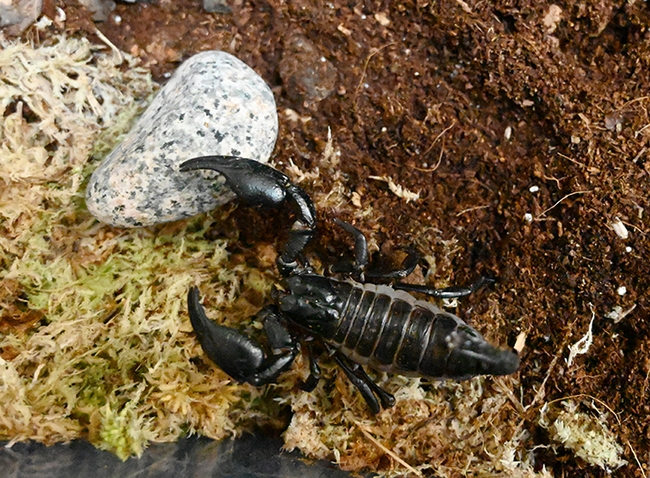
Close-up of an Asian forest scorpion shown at the UC Davis Biodiversity Museum Day by Martin Hauser of the CDFA. (Photo by Kathy Keatley Garvey)
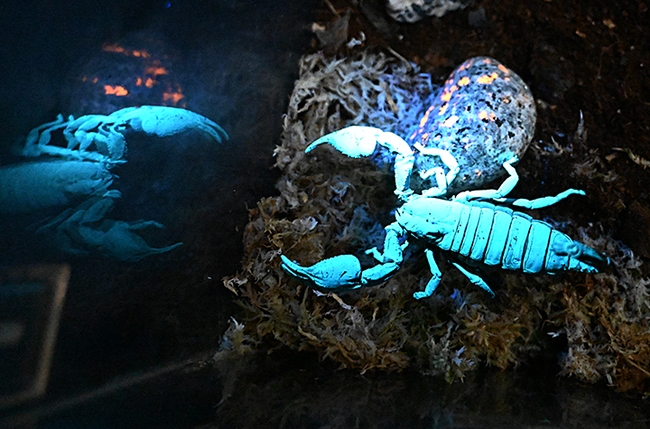
The Asian forest scorpion, under ultraviolet light, glows blue-green. (Photo by Kathy Keatley Garvey)
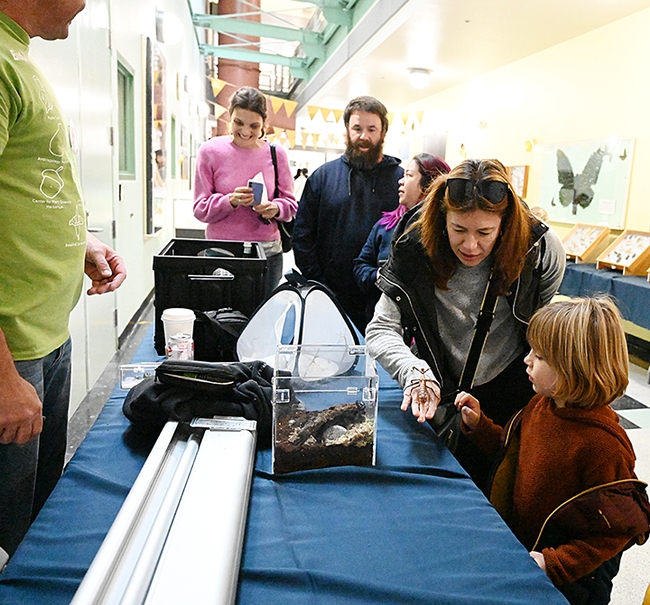
Visitors delighted in holding stick insects, aka walking sticks, at the Martin Hauser display in the Academic Surge Building during the UC Davis Biodiversity Museum Day. (Photo by Kathy Keatley Garvey)